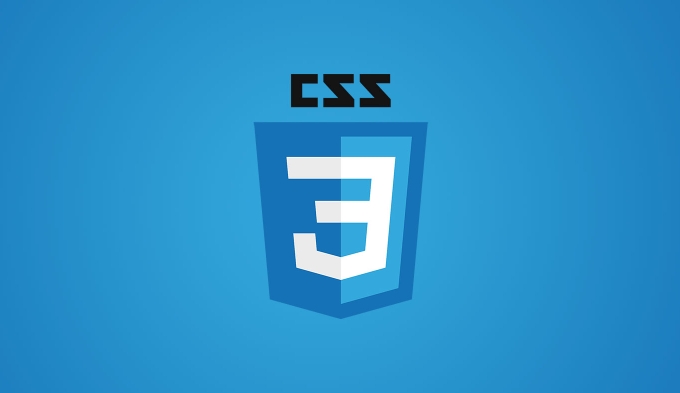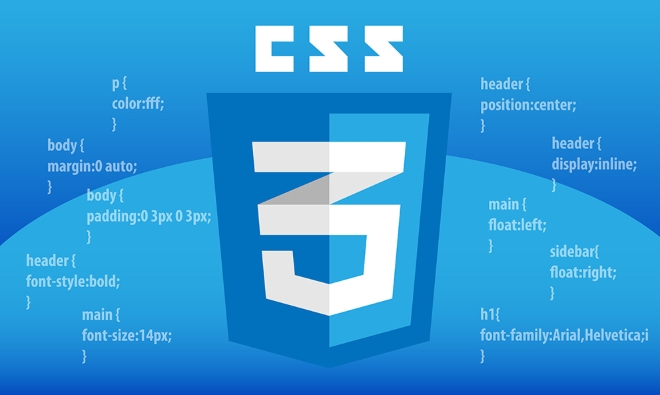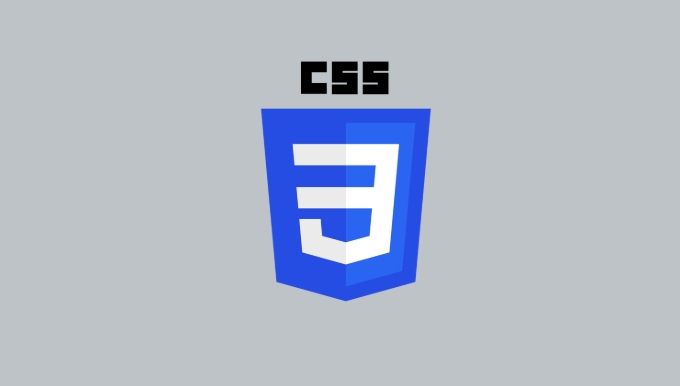The CSS box model is the core of web page layout. Each HTML element is composed of content, inner margin, border and outer margin; 1. The element size needs to consider the influence of padding and border, and the actual width = content padding × 2 border × 2; 2. The control spacing mainly depends on margin, but attention should be paid to the problem of vertical margin merging; 3. It is recommended to use box-sizing:border-box, so that width and height include padding and content, which is easy to calculate; 4. Common problems in layout such as the default margin of paragraphs, inline-block blank gap, and flex child element margin failure, etc., which can be solved by resetting the default style, negative margin or adjusting the font size.

The core of web page layout is actually hidden in the "box" of each element. It is not difficult to understand the box model of CSS, but to be really good, especially when dealing with spacing issues, you still have to pay attention to a lot of details.

What is a CSS box model?
Simply put, each HTML element is a rectangular box on the page, which consists of four parts: content, padding, border and margin.

- Content is where you put text and pictures.
- Padding is the space between content and borders.
- Border is the border line around padding and content.
- Margin is the external distance between the box and other elements.
Many people tend to ignore the impact of padding and border on the overall size at the beginning, which leads to misalignment of layout. For example, if a div with a width of 100px is added, if padding: 10px and border: 2px solid #000 is added, its actual width is actually 124px (100 10 2 2 2).
How to control the spacing between elements?
The distance between two adjacent elements is usually controlled by margin. However, there are several common "pits" that need attention:

- Margin Collapse : Two margins in the vertical direction may merge into one, which often occurs when using multiple paragraphs or titles.
- Don't over-rely rely on margin : Sometimes it is more intuitive to control spacing using the gap attribute in flex or grid layout.
- Use box-sizing: border-box : After setting this way, width and height include padding and content, which facilitates calculating the overall size.
For example:
.box {
width: 200px;
padding: 20px;
border: 1px solid #333;
box-sizing: border-box;
} The above code will keep the total width of .box at 200px, regardless of padding and border.
Common spacing problems in actual layout
In real projects, these situations are often encountered:
- The gap between paragraphs is too large because the browser has added margin to the p tag by default.
- When using inline-block layout, there are inexplicable gaps between elements, which are caused by whitespace symbols in HTML.
- The margin of child elements in the flex container does not take effect? It may be interfered with by the alignment of the parent container.
Solutions to these problems include:
- Reset default margin and padding (usually written at the beginning of CSS)
- Add negative margin to the inline-block element or set the parent element font-size: 0
- Use the developer tool to check the computed style to see if margin is overwritten or invalid
In general, understanding the box model is the basis for making a good page layout. Don't underestimate it, many layout problems stem from misuse of padding, margin and box-sizing. After mastering these core concepts, even the most complex layout can be broken down step by step.
Basically that's it.
The above is the detailed content of Understanding the CSS Box Model and spacing. For more information, please follow other related articles on the PHP Chinese website!

Hot AI Tools

Undress AI Tool
Undress images for free

Undresser.AI Undress
AI-powered app for creating realistic nude photos

AI Clothes Remover
Online AI tool for removing clothes from photos.

Clothoff.io
AI clothes remover

Video Face Swap
Swap faces in any video effortlessly with our completely free AI face swap tool!

Hot Article

Hot Tools

Notepad++7.3.1
Easy-to-use and free code editor

SublimeText3 Chinese version
Chinese version, very easy to use

Zend Studio 13.0.1
Powerful PHP integrated development environment

Dreamweaver CS6
Visual web development tools

SublimeText3 Mac version
God-level code editing software (SublimeText3)

Hot Topics
 How can I include CSS only on some pages?
Jun 11, 2025 am 12:01 AM
How can I include CSS only on some pages?
Jun 11, 2025 am 12:01 AM
There are three ways to selectively include CSS on a specific page: 1. Inline CSS, suitable for pages that are not frequently accessed or require unique styles; 2. Load external CSS files using JavaScript conditions, suitable for situations where flexibility is required; 3. Containment on the server side, suitable for scenarios using server-side languages. This approach can optimize website performance and maintainability, but requires balance of modularity and performance.
 Flexbox vs Grid: Understanding the Key Differences in CSS Layout
Jun 10, 2025 am 12:03 AM
Flexbox vs Grid: Understanding the Key Differences in CSS Layout
Jun 10, 2025 am 12:03 AM
Flexboxisidealforone-dimensionallayouts,whileGridsuitstwo-dimensional,complexlayouts.UseFlexboxforaligningitemsinasingleaxisandGridforprecisecontroloverrowsandcolumnsinintricatedesigns.
 Creating an Auto-Closing Notification With an HTML Popover
Jun 10, 2025 am 09:45 AM
Creating an Auto-Closing Notification With an HTML Popover
Jun 10, 2025 am 09:45 AM
The HTML popover attribute transforms elements into top-layer elements that can be opened and closed with a button or JavaScript. Popovers can be dismissed a number of ways, but there is no option to auto-close them. Preethi has a technique you can u
 What is 'render-blocking CSS'?
Jun 24, 2025 am 12:42 AM
What is 'render-blocking CSS'?
Jun 24, 2025 am 12:42 AM
CSS blocks page rendering because browsers view inline and external CSS as key resources by default, especially with imported stylesheets, header large amounts of inline CSS, and unoptimized media query styles. 1. Extract critical CSS and embed it into HTML; 2. Delay loading non-critical CSS through JavaScript; 3. Use media attributes to optimize loading such as print styles; 4. Compress and merge CSS to reduce requests. It is recommended to use tools to extract key CSS, combine rel="preload" asynchronous loading, and use media delayed loading reasonably to avoid excessive splitting and complex script control.
 How to use Lotties in Figma
Jun 14, 2025 am 10:17 AM
How to use Lotties in Figma
Jun 14, 2025 am 10:17 AM
In the following tutorial, I will show you how to create Lottie animations in Figma. We'll use two colorful designs to exmplify how you can animate in Figma, and then I'll show you how to go from Figma to Lottie animations. All you need is a free Fig
 Breaking Boundaries: Building a Tangram Puzzle With (S)CSS
Jun 13, 2025 am 11:33 AM
Breaking Boundaries: Building a Tangram Puzzle With (S)CSS
Jun 13, 2025 am 11:33 AM
We put it to the test and it turns out Sass can replace JavaScript, at least when it comes to low-level logic and puzzle behavior. With nothing but maps, mixins, functions, and a whole lot of math, we managed to bring our Tangram puzzle to life, no J
 External vs. Internal CSS: What's the Best Approach?
Jun 20, 2025 am 12:45 AM
External vs. Internal CSS: What's the Best Approach?
Jun 20, 2025 am 12:45 AM
ThebestapproachforCSSdependsontheproject'sspecificneeds.Forlargerprojects,externalCSSisbetterduetomaintainabilityandreusability;forsmallerprojectsorsingle-pageapplications,internalCSSmightbemoresuitable.It'scrucialtobalanceprojectsize,performanceneed
 Does my CSS must be on lower case?
Jun 19, 2025 am 12:29 AM
Does my CSS must be on lower case?
Jun 19, 2025 am 12:29 AM
No,CSSdoesnothavetobeinlowercase.However,usinglowercaseisrecommendedfor:1)Consistencyandreadability,2)Avoidingerrorsinrelatedtechnologies,3)Potentialperformancebenefits,and4)Improvedcollaborationwithinteams.






